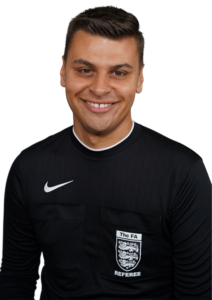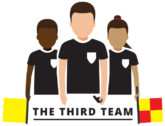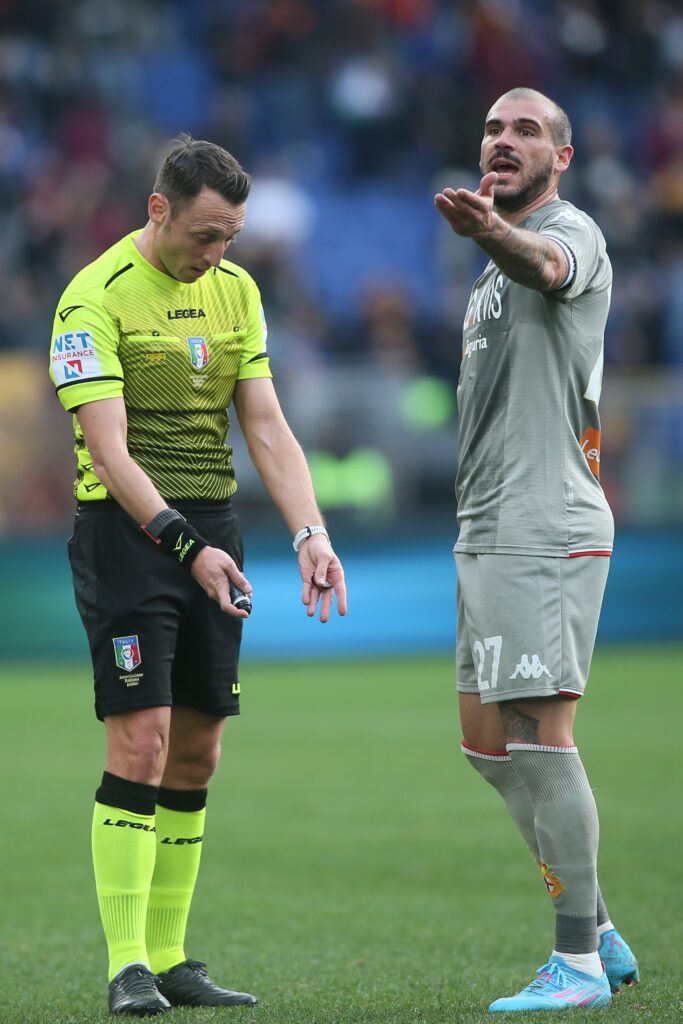Imagery is a form of simulation that is similar to real sensory experiences except the experiences happen in the mind. Through imagery, you can recreate previous positive experiences to improve. You actually recall from memory pieces of information stored from your experiences and using them to shape further meaningful experiences. Your mind remembers these events and recreates pictures and feelings of them for you to use for future events.
You can also create events that have not yet occurred. For example, a referee can create initial positive experiences of their own by observing how colleagues train and perform on matchdays, and start to shape future behaviours. When you try to mimic their actions and experience, this is your mind’s way of remembering events and creating pictures and the feelings around them. This could be the feeling of the rain, the grass, or the blow of your whistle. You can even imagine the feeling of success.
The Science Behind Imagery – Why It Works
Humans can generate information from memory that is essentially the same as an actual experience. When you do this, those images can have an effect on your nervous system similar to the original or actual experience.
The science of imagery is called the psychoneuromuscular theory. A referee practices actions in their mind, imagines the movements without performing them, and the brain interprets it as if the official is performing them. This generates similar impulses in the brain and in the muscles as if they were physically doing it. Small impulses fire from your brain to your muscles with the exactness that you are imagining them.
Imagery should include as many senses as possible. Think back to your favourite film. If you were watching the film but had no sound, what would your experience be like? What if you had sound but no picture? Now imagine you were watching and listening to your favourite film and you could taste, smell and feel everything going on in that film. How would that change your experience? You may have attached various emotional states to your favourite movie: sadness, laughter, anger, etc. Because we use so many of our senses when we watch a movie, it sometimes feels like real life and that is why we watch it. Imagery happens in the same way.
The Art Of Imagery – Where To Begin
Imagery can be used for a skill, a short sequence of skills, or a situation. It depends on what you need to strengthen. For example, one of my professional referees struggles to stay relaxed before she blows the first whistle. We’ve built a script so that she can see herself feeling calm and relaxed before she officiates.
Imagery starts with recreating a past performance, creating an experience based on sound technical standards, or utilising someone else who does it well.
Think back to your best refereeing performance. When you recreate this past personal experience, recall the physical, mental, and emotional elements around that specific event.
Create a technically sound experience. Imagine an optimal form of this experience based on technique and now visualise yourself doing it.
Watch that special someone who does what you want to do well. Take note of every little movement, reaction, then recreate it for yourself!
Your Imagery Plan
From start to finish, bullet point all the components of what you want the situation to look like (past experience, technically sound or the way someone else does it well).
Pull your bullet points together into a story. If you were going to teach someone else to do ‘this’ how would you explain it?
Read it out loud. Is it accurate? If not, what needs to change? How does it feel?
Make any tweaks or changes to get it just right.
Deepen the experience. Add words of strength (i.e. strong, powerful, etc.) Add any sensory information that adds to the experience (i.e. anything you smell, hear, taste, feel or see)
Have someone else read it to you. Is it accurate? If not, what needs to change? How does it feel?
Once it feels accurate and positive, audio record it.
Listen to it before bed and first thing in the morning.
When To Use Imagery
Use snippets during the day whenever you have a moment, particularly in times when you are thinking about your next game, when you are having anxiety, or when you are thinking negatively about your performance.
Incorporate imagery into your dreams. When you think about imagery prior to going to sleep it will allow the subconscious to carry over into your dream state. Use it again when you first wake up in the morning and it reinforces it.
Use imagery as part of a pre-training/pre-match routine. This is a way of positively structuring the experience before training and performing to keep you focused on the task at hand.
Imagery Takes Practice
Imagery takes development, refinement and practice just like physical training regime. Things to keep in mind:
If you struggle with focus, you may want to work on focus prior to using imagery.
Imagery is hard to come up with in the moment which is why it’s important to prepare for it.
If coming up with your own seems challenging, use YouTube videos of others who do what you want to do in the best possible way.
Imagery should include vividness (using more senses) and good controllability (learning to manipulate the images).
What You Can Gain Using Imagery
Improves concentration. If you are focused on what you want to do and how, you won’t be focused on unrelated elements of performance that detract or distract from performance.
Builds confidence.
Helps control emotional responses.
Acquire, practice or fine tune your skills. You can practice these skills to fine tune them and then visualise corrections for a bigger impact. Research concludes that combined with physical practice imagery can produce superior skill learning.
Cope with pain or injury and or speed recovery. Imagining the healing of an injured area can speed recovery. Using imagery to practice drills helps keep skills from deteriorating during injury.
Go Beyond
When we were young, we revealed considerable imagery capabilities however we are quickly taught to neglect this form of thinking in order to develop our analytical and language centers. Fortunately, we can still utilise that area of our brain. Much like a muscle is strengthened (muscle memory), imagery skills can be regained through practice. It’s not magic. It’s a human capacity that elite referees can take advantage of to develop more potential and gain that matchday edge they need. Imagery can take your performance to the next level.
At The Third Team I work individually and in collaboration with different professionals where I have developed workshops and 1-2-1 sessions associated with Resilience and Mental Toughness Development to help referees. The workshops and 1-2-1 sessions are interactive, where referees are encouraged to open up and share their experiences to help themselves and each other.
Feel free to contact me if you’d like to know more about my workshops or 1-2-1 sessions and how I could help you or your officials.
Best Wishes,

Nathan Sherratt
Referee Educator & Managing Director of The Third Team

Nathan Sherratt
Nathan Sherratt, Referee Educator, Resilience Trainer and Managing Director of The Third Team. A Mental Toughness Practitioner based in Tyne & Wear, North East England.

